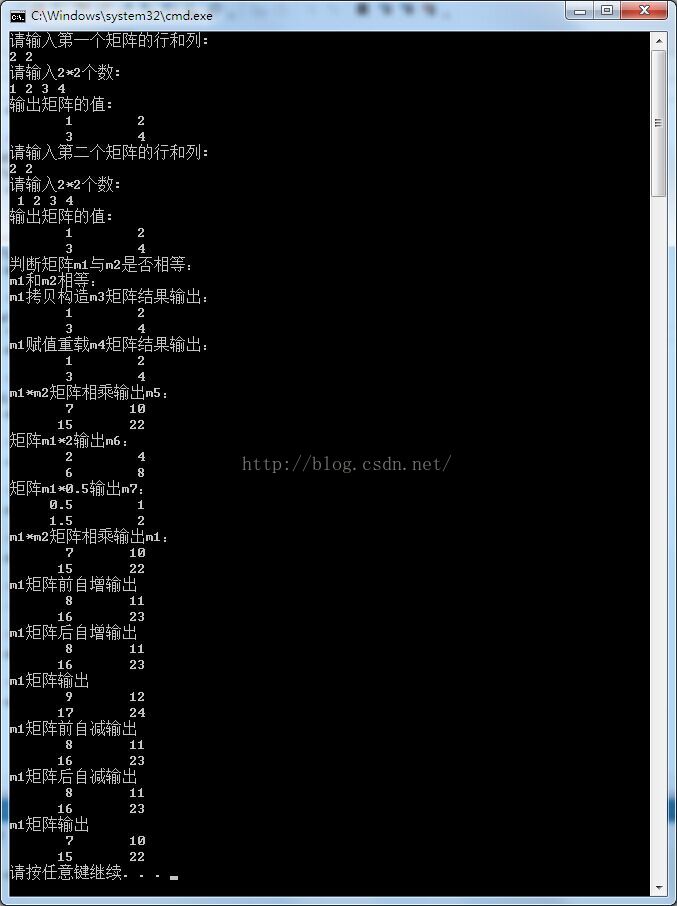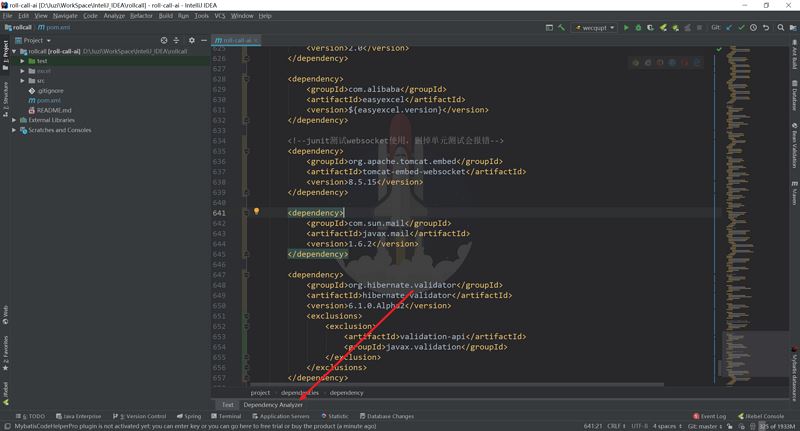前言
今天内容主要是解决一位粉丝提的问题:在使用 Spring Security OAuth2 时如何自定义认证服务器返回异常。
那么首先我们先以 Password模式为例看看在认证时会出现哪些异常情况。
授权模式错误
这里我们故意将授权模式 password 修改成 password1,认证服务器返回如下所示的异常
{
"error":"unsupported_grant_type",
"error_description":"Unsupportedgranttype:password1"
}
密码错误
在认证时故意输错 username 或 password 会出现如下异常错误:
{
"error":"invalid_grant",
"error_description":"Badcredentials"
}
客户端错误
在认证时故意输错 client_id 或 client
{
"error":"invalid_client",
"error_description":"Badclientcredentials"
}
上面的返回结
上面的返回结果很不友好,而且前端代码也很难判断是什么错误,所以我们需要对返回的错误进行统一的异常处理,让其返回统一的异常格式。
问题剖析
如果只关注解决方案,可以直接跳转到解决方案模块!
OAuth2Exception异常处理
在Oauth2认证服务器中认证逻辑最终调用的是 TokenEndpoint#postAccessToken()方法,而一旦认证出现 OAuth2Exception异常则会被 handleException()捕获到异常。如下图展示的是当出现用户密码异常时debug截图:
认证服务器在捕获到 OAuth2Exception后会调用 WebResponseExceptionTranslator#translate()方法对异常进行翻译处理。
默认的翻译处理实现类是 DefaultWebResponseExceptionTranslator,处理完成后会调用 handleOAuth2Exception()方法将处理后的异常返回给前端,这就是我们之前看到的异常效果。
处理方法熟悉Oauth2套路的同学应该知道了如何处理此类异常,就是「自定义一个异常翻译类让其返回我们需要的自定义格式,然后将其注入到认证服务器中。」
但是这种处理逻辑只能解决 OAuth2Exception异常,即前言部分中的「授权模式异常」和「账号密码类的异常」,并不能解决我们客户端的异常。
客户端异常处理
客户端认证的异常是发生在过滤器 ClientCredentialsTokenEndpointFilter上,其中有后置添加失败处理方法,最后把异常交给 OAuth2AuthenticationEntryPoint这个所谓认证入口处理。执行顺序如下所示:
然后跳转到父类的 AbstractOAuth2SecurityExceptionHandler#doHandle()进行处理:
最终由 DefaultOAuth2ExceptionRenderer#handleHttpEntityResponse()方法将异常输出给客户端
处理方法
通过上面的分析我们得知客户端的认证失败异常是过滤器 ClientCredentialsTokenEndpointFilter转交给 OAuth2AuthenticationEntryPoint得到响应结果的,既然这样我们就可以重写 ClientCredentialsTokenEndpointFilter然后使用自定义的 AuthenticationEntryPoint替换原生的 OAuth2AuthenticationEntryPoint,在自定义 AuthenticationEntryPoint处理得到我们想要的异常数据。
解决方案
为了解决上面这些异常,我们首先需要编写不同异常的错误代码:ReturnCode.java
- CLIENT_AUTHENTICATION_FAILED(1001,"客户端认证失败"),
- USERNAME_OR_PASSWORD_ERROR(1002,"用户名或密码错误"),
- UNSUPPORTED_GRANT_TYPE(1003,"不支持的认证模式");
OAuth2Exception异常
@Slf4j
publicclassCustomWebResponseExceptionTranslatorimplementsWebResponseExceptionTranslator{
@Override
publicResponseEntity<ResultData<String>>translate(Exceptione)throwsException{
log.error("认证服务器异常",e);
ResultData<String>response=resolveException(e);
returnnewResponseEntity<>(response,HttpStatus.valueOf(response.getHttpStatus()));
}
/**
*构建返回异常
*@parameexception
*@return
*/
privateResultData<String>resolveException(Exceptione){
//初始值500
ReturnCodereturnCode=ReturnCode.RC500;
inthttpStatus=HttpStatus.UNAUTHORIZED.value();
//不支持的认证方式
if(einstanceofUnsupportedGrantTypeException){
returnCode=ReturnCode.UNSUPPORTED_GRANT_TYPE;
//用户名或密码异常
}elseif(einstanceofInvalidGrantException){
returnCode=ReturnCode.USERNAME_OR_PASSWORD_ERROR;
}
ResultData<String>failResponse=ResultData.fail(returnCode.getCode(),returnCode.getMessage());
failResponse.setHttpStatus(httpStatus);
returnfailResponse;
}
}
然后在认证服务器配置类中注入自定义异常翻译类
@Override
publicvoidconfigure(AuthorizationServerEndpointsConfigurerendpoints)throwsException{
//如果需要使用refresh_token模式则需要注入userDetailService
endpoints
.authenticationManager(this.authenticationManager)
.userDetailsService(userDetailService)
//注入tokenGranter
.tokenGranter(tokenGranter);
//注入自定义的tokenservice,如果不使用自定义的tokenService那么就需要将tokenServce里的配置移到这里
//.tokenServices(tokenServices());
//自定义异常转换类
endpoints.exceptionTranslator(newCustomWebResponseExceptionTranslator());
}
客户端异常
重写客户端认证过滤器,不使用默认的 OAuth2AuthenticationEntryPoint处理异常
publicclassCustomClientCredentialsTokenEndpointFilterextendsClientCredentialsTokenEndpointFilter{
privatefinalAuthorizationServerSecurityConfigurerconfigurer;
privateAuthenticationEntryPointauthenticationEntryPoint;
publicCustomClientCredentialsTokenEndpointFilter(AuthorizationServerSecurityConfigurerconfigurer){
this.configurer=configurer;
}
@Override
publicvoidsetAuthenticationEntryPoint(AuthenticationEntryPointauthenticationEntryPoint){
super.setAuthenticationEntryPoint(null);
this.authenticationEntryPoint=authenticationEntryPoint;
}
@Override
protectedAuthenticationManagergetAuthenticationManager(){
returnconfigurer.and().getSharedObject(AuthenticationManager.class);
}
@Override
publicvoidafterPropertiesSet(){
setAuthenticationFailureHandler((request,response,e)->authenticationEntryPoint.commence(request,response,e));
setAuthenticationSuccessHandler((request,response,authentication)->{
});
}
}
在认证服务器注入异常处理逻辑,自定义异常返回结果。(代码位于 AuthorizationServerConfig)
@Bean
publicAuthenticationEntryPointauthenticationEntryPoint(){
return(request,response,e)->{
response.setStatus(HttpStatus.UNAUTHORIZED.value());
ResultData<String>resultData=ResultData.fail(ReturnCode.CLIENT_AUTHENTICATION_FAILED.getCode(),ReturnCode.CLIENT_AUTHENTICATION_FAILED.getMessage());
WebUtils.writeJson(response,resultData);
};
}
修改认证服务器配置,注入自定义过滤器
@Override
publicvoidconfigure(AuthorizationServerSecurityConfigurersecurity)throwsException{
CustomClientCredentialsTokenEndpointFilterendpointFilter=newCustomClientCredentialsTokenEndpointFilter(security);
endpointFilter.afterPropertiesSet();
endpointFilter.setAuthenticationEntryPoint(authenticationEntryPoint());
security.addTokenEndpointAuthenticationFilter(endpointFilter);
security
.authenticationEntryPoint(authenticationEntryPoint())
/*.allowFormAuthenticationForClients()*///如果使用表单认证则需要加上
.tokenKeyAccess("permitAll()")
.checkTokenAccess("isAuthenticated()");
}
此时需要删除 allowFormAuthenticationForClients()配置,否则自定义的过滤器不生效,至于为什么不生效大家看看源码就知道了。
测试
授权模式错误
账号密码错误
客户端错误
以上,希望对你有所帮助!
原文地址:https://mp.weixin.qq.com/s/JwDTdone_8DV7wlr_CWZpw



















